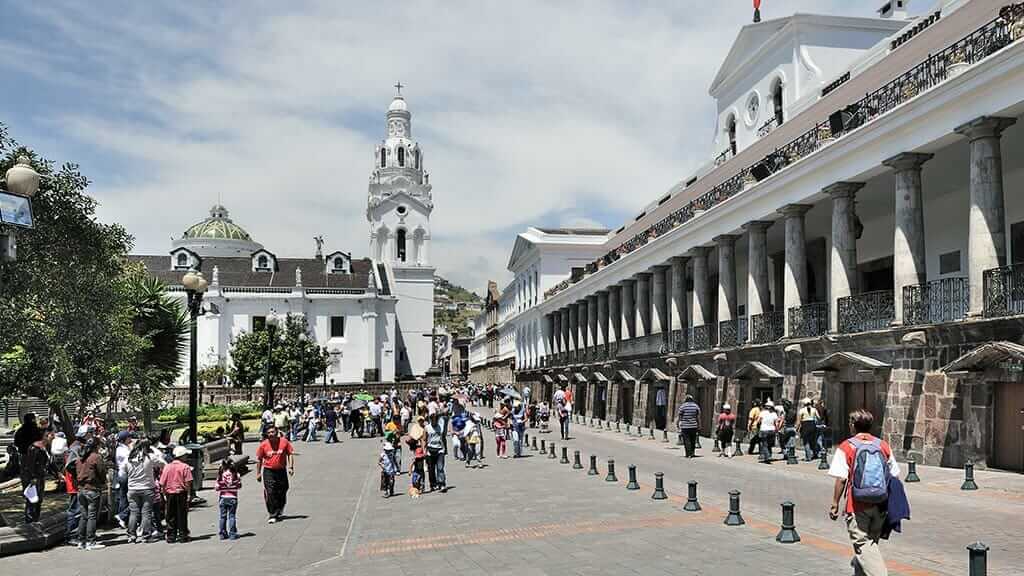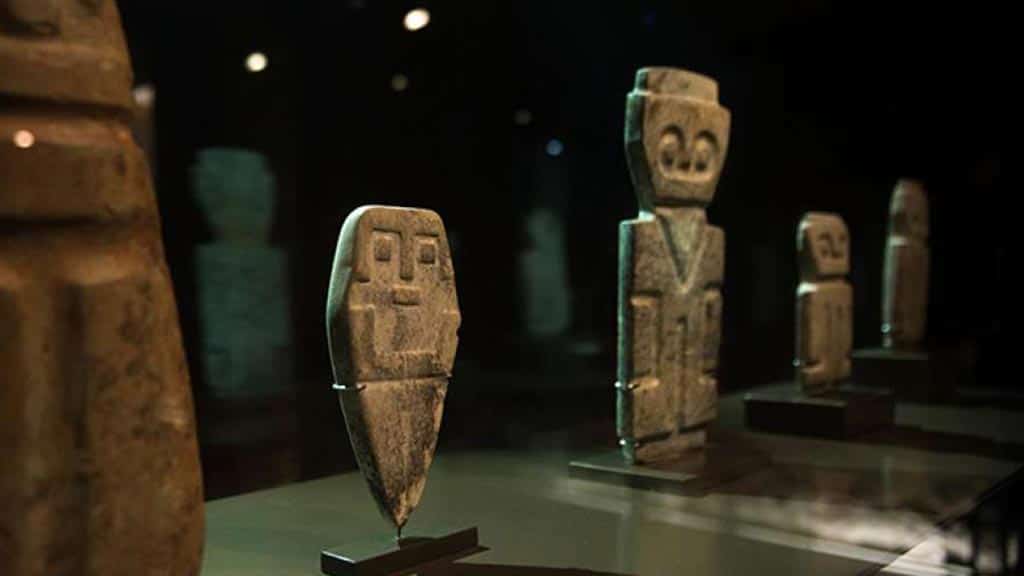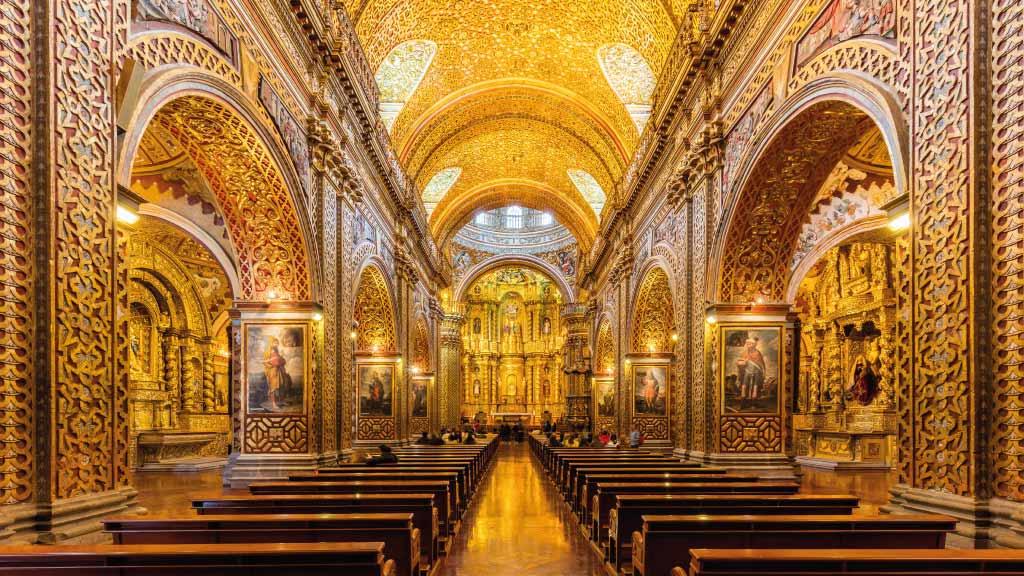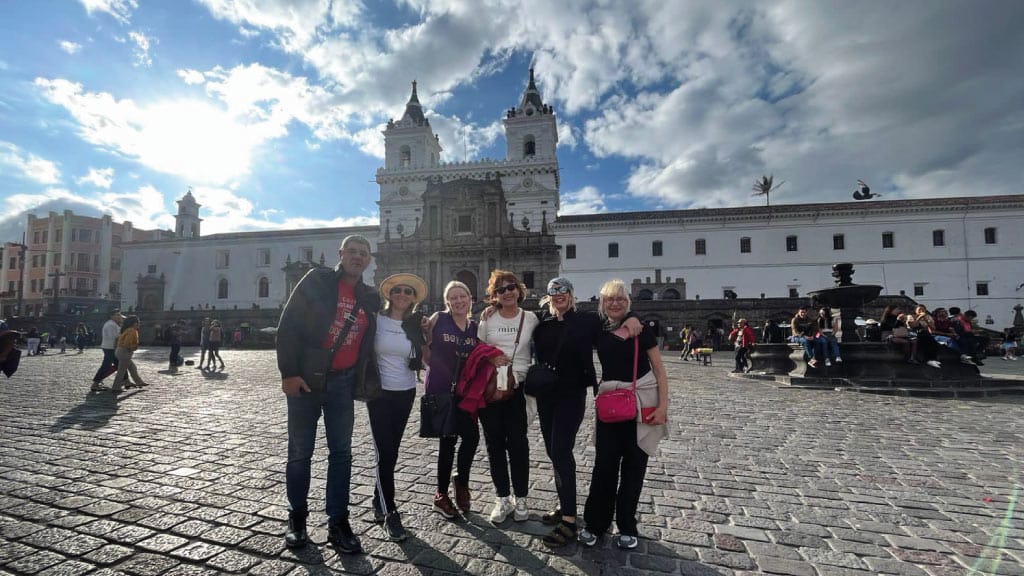Quito Old Town
Quito may not have Chicago’s Bean, the Louvre of Paris, Shakespeare’s Globe Theatre in London, or the homes of James Joyce in Dublin, but the capital of Ecuador has its own story to tell.
In fact, Old Town Quito was the very first Cultural Heritage recognised by UNESCO in 1978. With 32 museums, 24 churches, 7 convents, 6 monasteries, and 13 plazas, it's easy to see why.
Mirroring the history of its neighbors in Europe and North America with its own legacy of events, Quito’s first inhabitants were wandering tribes that bowed to the Inca, who in turn were defeated by the Spanish.
The Spanish transformed the country and its capital, building churches on the ruins of Incan streets and ushering in a new form of art that would become the foundations for Ecuador’s own art movement after its independence.
The historic center of Quito (also known as Quito Old Town) beats to the pulse of the country, moving with the rhythm of people from the far reaches of Ecuador. People come to marvel at the architecture and immerse themselves in the vibrant spirit of the center’s different neighborhoods.
SECURE YOUR ECUADOR TRAVEL
Get a FREE personalised quote todayRevolutionaries, artists, writers, musicians, and heroes of the republic walked these streets in times of triumph and joined together in protest when the change was on the doorstep.
This tradition still stands today, people come from near and far to march down the cobblestone streets to Independence Plaza. Overlooked by the Presidential Palace, the square welcomes both celebration and dissent, where voices cry out for change, and the resulting changing of the guard ushers in new policies for both the great and small.
Touring the historic center of Quito brings out the romance and spirit of Ecuador-putting you front and center to the hopes and dreams of its people amid the grandeur of the past.
Keep reading for some of the places that you can see on a classical tour of Old Town Quito.
Places to Visit in Old Town Quito
1. La Ronda
The pedestrian streets of La Ronda call to those with a thirst for culture away from the museums and galleries of the city. Wandering minstrels entertain under the lights of the historic center, while jovial crowds meander back and forth between artisanal shops, bakeries, theaters, and eateries that dot the street front.
People come to relax and enjoy the romance of the surrounding streets, which were once a path for the first residents of the area that led to a nearby source of freshwater.
During the formative years of the city, it was home to many of the up-and-coming artists, musicians, poets, and writers who would leave their names as significant figures in the narrative of Ecuador.
Walking the streets and discovering the nooks and crannies of the neighborhood of the “Old City” opens up a different side of Quito. There is a fresh air that raises the spirit and gives pause, promising a doorway into the deep roots of the past and shedding new light on the thriving culture of the present.
2. The City Museum
Quito’s city museum, located a short walk up the street from La Ronda, overlooks the land that has welcomed explorers from all over the world-including Francisco de Orellana, Charles de Condamine, Edward Whymper, and Theodore Roosevelt.
Inside the sleek building, the culture that sweeps through the nearby streets of the historic center comes further into focus.
The museum’s exhibitions cover modern-day issues as well as documenting the journeys of the past, highlighting the depth of history, while shedding new light on the many different cultures of the present.
If you visit just one museum in Old Town Quito then this should be the one!
GET FREE ADVICE
From an Ecuador destination expert today3. Basílica del Voto Nacional
The Basilica is one of the Catholic country’s many additions to the legacy that the Spanish occupation created in Ecuador. The towering building stands guard over the crowded streets of the historic center, and its two towers offer sweeping views of the width and breadth of Quito.
Built between 1892 and 1978, the interior of the church is stunning. Vaulted ceilings arch over the main sanctuary, cascading with light from the intricately stained glass windows.
The towers of the Basilica are a few stories up flights of stairs, across the top of the sanctuary, and a scramble up a ladder on the outside of the church. Check out the animals of the Galapagos along the roofline-taking the place of the traditional gargoyles.
4. Independence Plaza (Plaza Grande)
This area is a historical meeting point that dates back to the Inca and is the center of the city. Crowds gather daily, drawn to the Presidential Palace, the Metropolitan Cathedral, and the museums and art galleries that are found around every bend and corner nearby.
The changing pace of the country is set here. Touring the Presidential Plaza and ducking into the shops and galleries puts you in the center of the action. The vantage point gives you a glimpse into the everyday life of the people of the city while opening up a door to the character of the country.
The Plaza Grande is the perfect spot for people watching, or grabbing a bite to eat in traditional restaurants around the pretty patio of the Arch-bishops Palace.
5. El Alabado Museum
Built in 1671, hundreds of years before Ecuador would win Independence from the Spanish, El Alabado Museum stands close to the Plaza de San Francisco in Old Town Quito.
The museum is the place to find out about the different people and cultures of the region-home to a fascinating collection of artifacts from many cultures that lived all over ancient Ecuador.
This is one of our favorite Quito Old Town museums to wile away a few hours, especially for those interested in ceramics.
6. San Francisco Plaza
The largest public square in historic Old Town Quito, San Francisco Plaza is a must-visit!
This iconic square sits atop ancient Incan ruins, including what was once Emperor Atahualpa's palace, creating layers of history beneath your feet.
The massive cobblestone plaza opens up dramatically from the narrow colonial streets, offering "one of the finest sights in all of Ecuador" with the stunning white facade of the San Francisco Church and Monastery dominating the scene.
Once a bustling indigenous trading center, today you can grab a coffee at one of the surrounding cafés and watch the mix of tourists and locals who still gather in this timeless space. The plaza has a somewhat austere beauty - it's spacious and unadorned, letting the magnificent colonial architecture speak for itself, while street vendors and the occasional procession keep the centuries-old square very much alive and part of modern Quito.
Don't miss Yumbos Chocolate on San Francisco Plaza for tastings and fine views of the Monastery opposite.
7. La Compañia Church
If you're looking for pure baroque opulence in Quito, La Compañía church will absolutely blow you away.
Construction on this marvelously gilded Jesuit church began in 1605 but wasn't completed for another 160 years, and honestly, every single one of those years shows.
The church is a baroque riot of gilded stucco, gold leaf, gold-painted wooden carvings, and cannot fail to impress the visitor - it's basically what happens when Jesuits decide to create the most spectacular display of religious art imaginable. The intricate facade alone will have you snapping photos from every angle, while the interior feels like stepping inside a golden jewelry box designed by angels.
Located right in the heart of Quito's historic center on García Moreno and Sucre, it's one of the great baroque masterpieces in South America and the kind of place that makes you understand why colonial Old Town Quito earned its UNESCO World Heritage status.
How to Visit Old Town Quito?
In reality, it's very easy to visit the historic Old Town area of Quito city.
To do it by yourself, just grab a taxi to the Plaza Grande and take a wander. Try to cover some or all of the sites mentioned above, but there's so much more to see. Allow at least 1/2 day or more to explore without feeling time pressure.
For those who prefer to visit with an experienced tour guide who will bring the city to life with history and local legends, check out our private Colonial Quito Tour. The itinerary is flexible to your desires, and can even be combined into a full day out with a visit to the Equator.
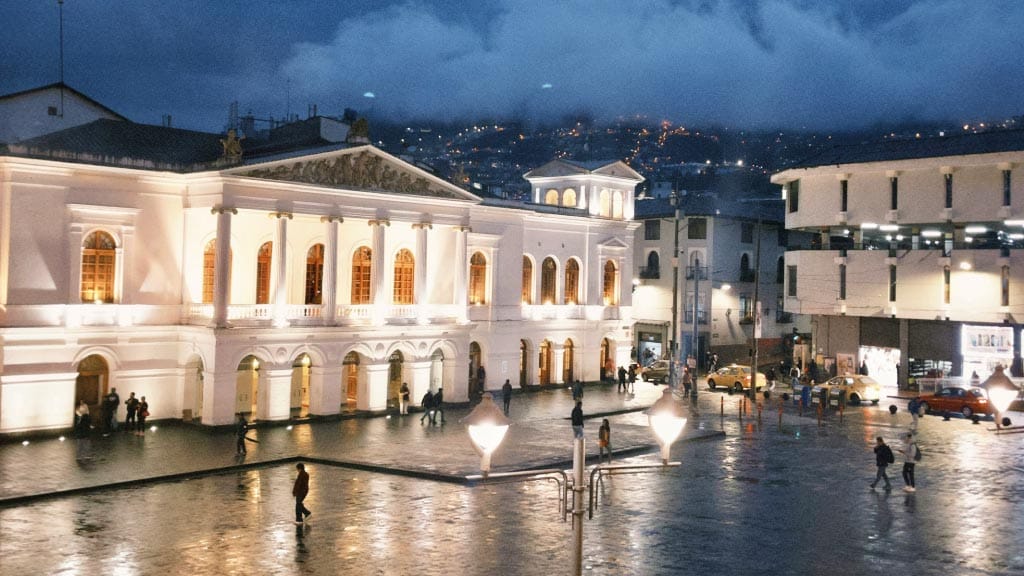
Practicalities for visiting Old Town Quito
Here are some more useful tips and links to plan a successful visit to the city of Quito:
- Transport in Quito - we recommend using the Quito Metro System for quick, cheap, and easy transportation around the city. The most convenient stop in Quito's old town is at San Francisco Plaza.
- Quito Safety - Quito is generally a safe city to visit, but, like other large cities, tourists should be aware of petty crime and pick-pocketing. Check out our Quito Safety blog for recommendations to help you stay out of trouble.
- Quito's Altitude - at 2800m above sea level, a visit to Quito can literally go straight to your head. Read our Quito Elevation post for tips to avoid altitude sickness.
- Things to do in Quito - Quito Old Town is just one area of our fabulous city. Check out 20 best things to do in Quito for more fun ideas and activities to keep you busy.
- Old Town Quito Restaurants - the city is chock-full of restaurants and eateries for all tastes and budgets.
- Quito Weather - expect the unexpected as the Quito climate often experiences 4 seasons in 1 day.
- Hotels in Old Town Quito - There are accommodation options in Quito in all of the main areas of town, and Quito Airport Hotels too.
- Fiestas de Quito - last but not least, if you are visiting Quito in December, then look out for the famous Fiestas de Quito parties to celebrate the foundation of the city.
Book With The #1 Trusted
Ecuador Travel Agency
Contact Happy Gringo Travel for a FREE TOUR QUOTE – we specialize in customized trips right across Ecuador, Galapagos, and the Amazon. We’ll be happy to include an unforgettable trip to Quito Old Town in a vacation itinerary for you.
In conclusion, the historic area of Old Town Quito is unmissable for tourists visiting Ecuador's capital.
Even today, this area of the city is steeped in history and legends, where each plaza, church, and colonial house has a unique story to tell. So, take the time to wander her cobbled streets, breathe in the sights and smells, and imagine what life would have been like here under the Incas or at the beginning of the Spanish empire.
Quito boasts the best-preserved historical old town of all Latin America, recognised by UNESCO since 1978. It ticks all of the right boxes for a fun day of exploring and discovery for tourists in Ecuador.





